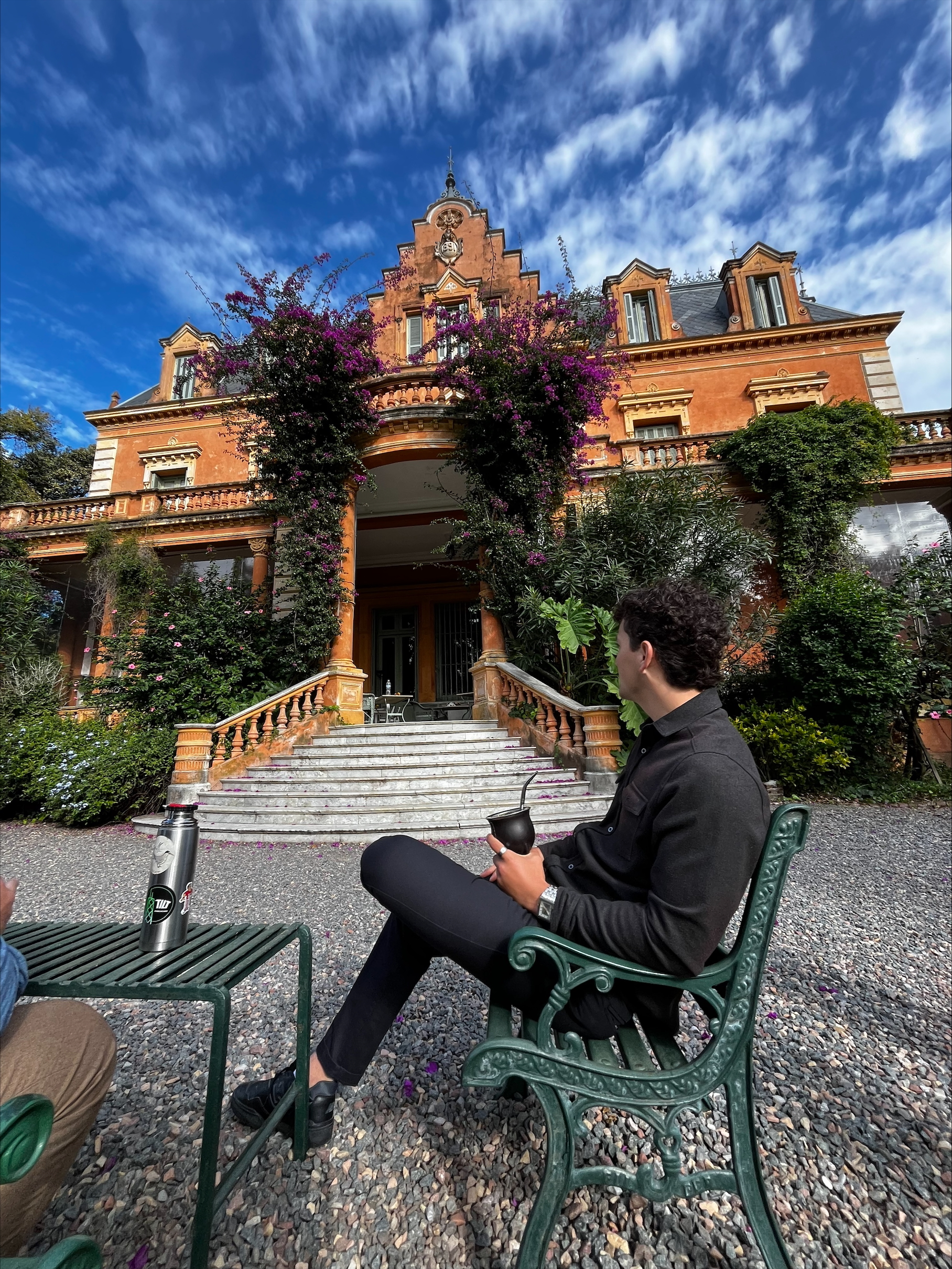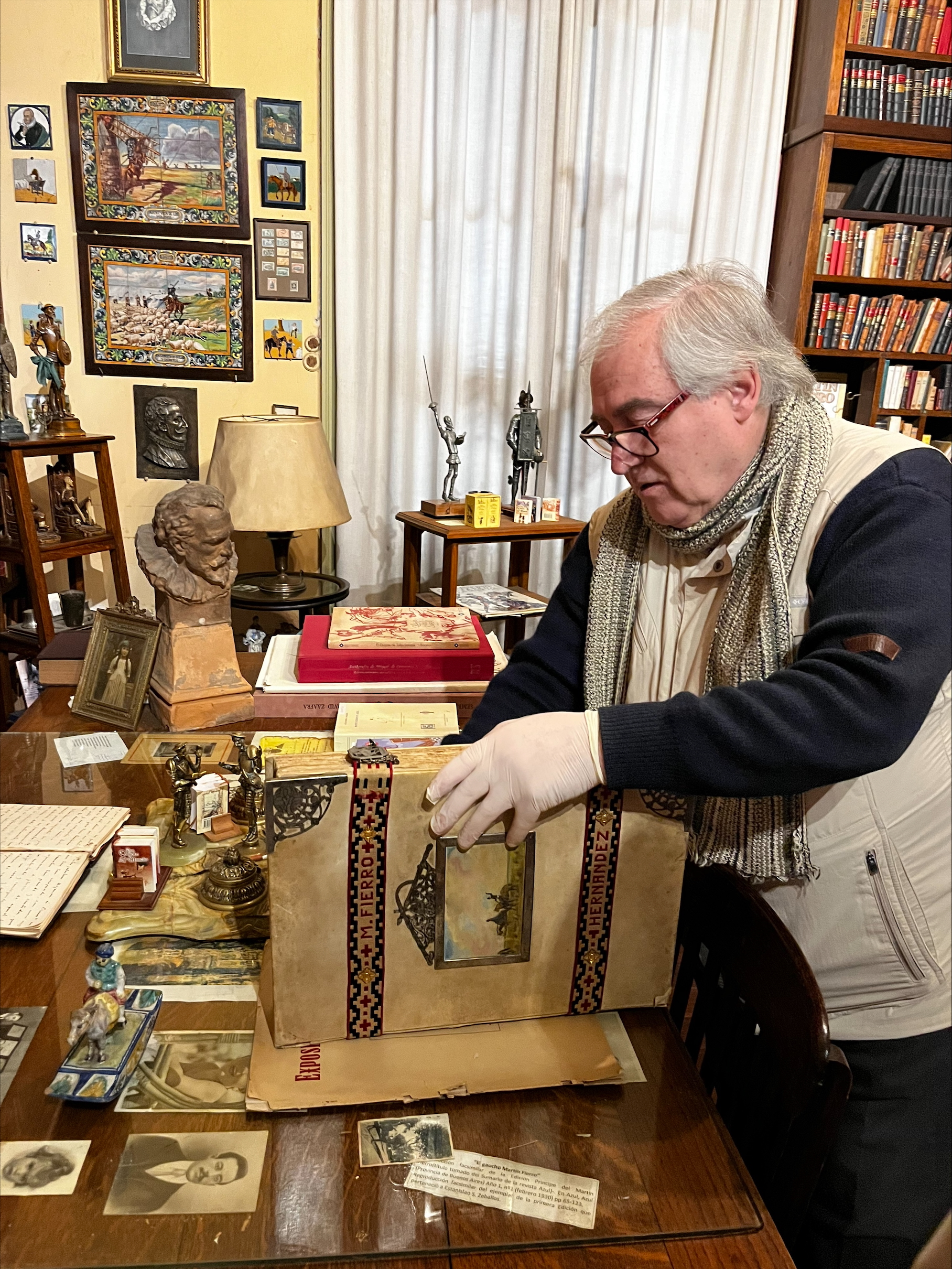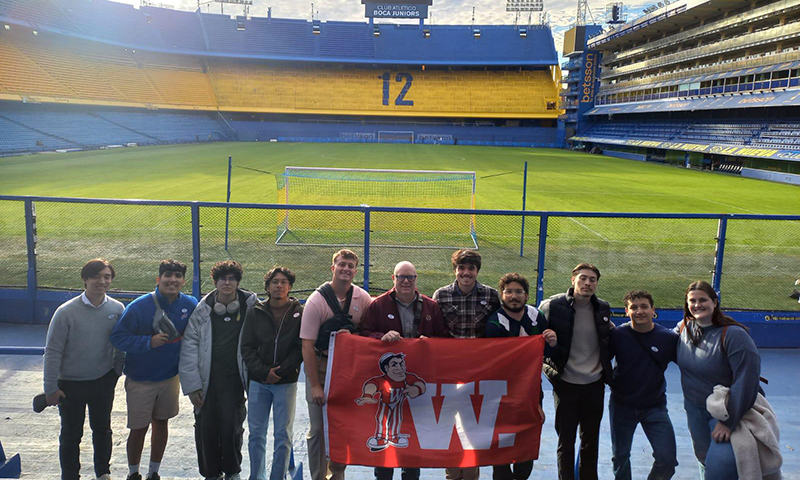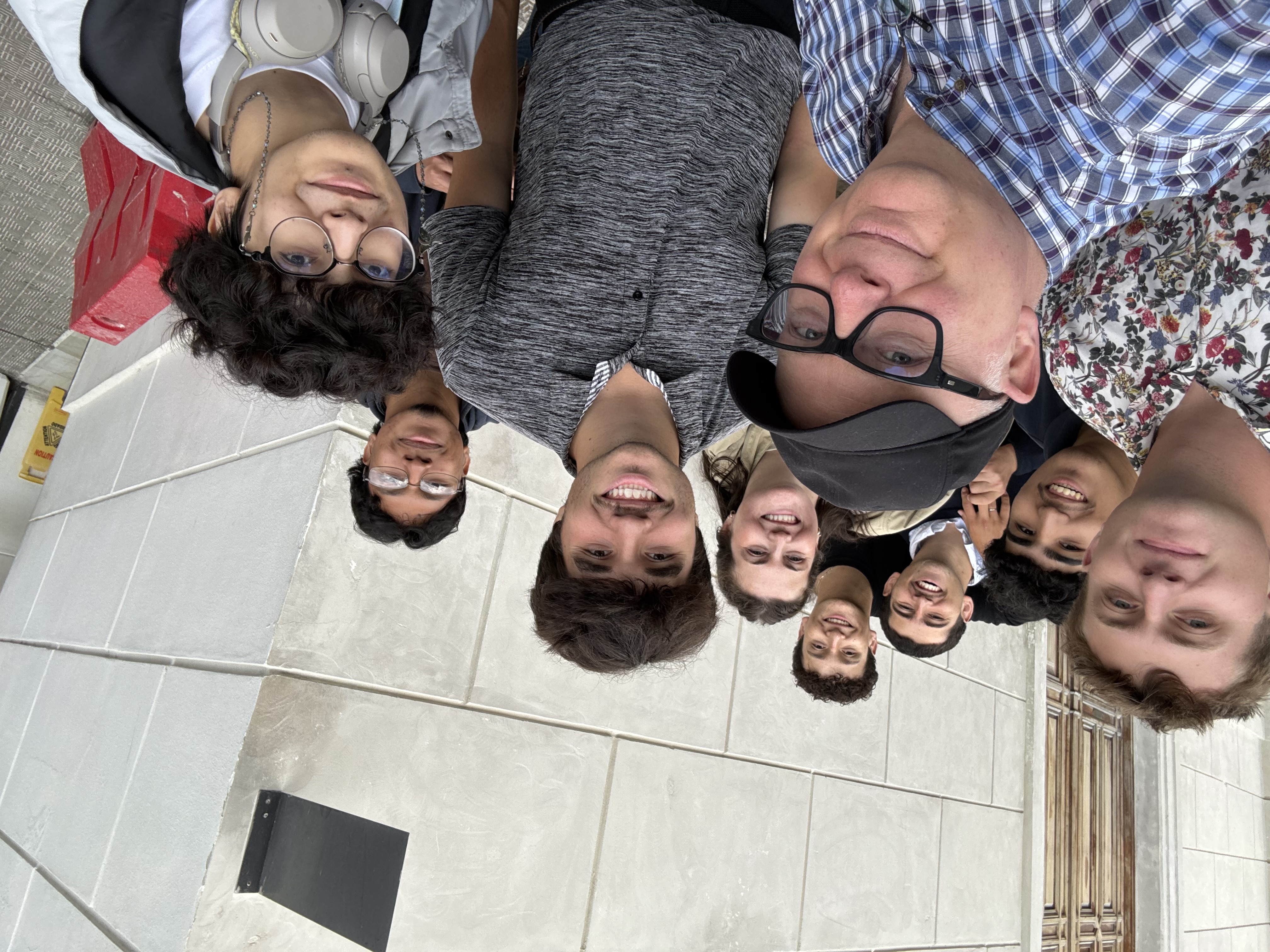This summer, a cohort of Wabash students capped off their spring semester Spanish literature class with a 12-day immersion trip to Argentina and Uruguay to experience the region’s rich history, language, and culture firsthand.
 Taught by Professor of Spanish Daniel Rogers, the course examined soccer’s influence in Latin America through literature, film, and cultural study.
Taught by Professor of Spanish Daniel Rogers, the course examined soccer’s influence in Latin America through literature, film, and cultural study.
“I’m always looking for opportunities to engage Wabash students in literature, culture, and language,” Rogers said. “Soccer seemed like a great entry point to do that. There are a ton of writers in Argentina—really important writers—who have used fútbol as a motif.”
Throughout the spring semester, students explored soccer’s deep roots and cultural influence in Latin America.
“I knew nothing about soccer before this class, but that quickly changed,” said Will Boas ’26, a Spanish major triple-minoring in philosophy, economics, and English. “We read a lot of texts, watched a documentary about Messi, and even one about people who are so obsessed with soccer that it interferes with their marriages. That was crazy.”
The group stayed in Buenos Aires, Argentina but ventured out of the city to experience the country and culture through local eyes.
Antonio “Toni” Grandinetti ’28, a political science major and educational studies minor, hails from Azul, a rural city three hours south of the capital. His family hosted the class for an asado, one of Argentina’s most beloved culinary and social traditions.
Like a long, leisurely barbecue, the asado brought together friends and family for hours of grilled meats, conversation, music, and laughter.
“The plan was always to go to Buenos Aires, the capital,” Grandinetti said. “But if you come to the U.S. and only go to New York, that’s not a good representation of the whole country. I wanted to show another way of Argentine life—our cornfields, our agriculture, our family life.”
The visit to Azul became a highlight of the trip, especially for Grandinetti.

“The guys played pool with my little brother. He was very happy because he beat two of them,” he said. “Having everyone there sharing drinks of mate and fernet with my family in our little house in my home country. It was the greatest.”
While in Azul, the class toured the city, and learned about gauchos—the horsemen and cowhands who symbolize Argentina’s pastoral heritage.
“We stopped at a farm where we met a gaucho who oversees cattle on hundreds of acres,” said Boas. “He showed us how to harness a horse, and we followed him as he rounded them up and organized them into pens based on the length of their tails.”
The group also crossed the river to Colonia del Sacramento, Uruguay, a UNESCO (United Nations Educational, Scientific and Cultural Organization) World Heritage site founded by the Portuguese in 1680.
“There’s a lot of preserved history in Colonia from a century or more of battles,” Boas explained. “The roads are old and uneven, and there’s a mix of Spanish and Portuguese architecture. You could just feel that there was a lot of history there.”
And no trip to Argentina would be complete without fútbol. The students toured the iconic Boca Juniors stadium—an experience especially meaningful for Cris Cantu ’26, a rhetoric major and English minor who grew up watching the team with his family in Texas.
“It’s hard to find the right words to describe Boca Juniors,” said Cantu. “They’re the people’s team. They’ve got a smaller, kind of rundown stadium in a rundown neighborhood, but they’ve won a lot of championships.”
Cantu said stepping into the stadium, affectionately known as “La Bombonera” (The Chocolate Box) for its unique shape, felt like stepping into his childhood dreams.

“I am of Mexican descent, so soccer is big in our culture as well,” he said. “My older brother and uncles always praised Boca Juniors because they were the underdogs, and they had a surprising number of Mexican players. When I found out we’d be seeing where they play, I called my brother, and we talked about it for hours.
“Standing in front of that stadium, I realized I was living a lot of what my family wishes they could do—all because of a Wabash opportunity,” he continued. “It was all so surreal.”
The class also attended a professional match at River Plate Stadium, witnessing firsthand the energy and passion that define Argentine soccer.
While the trip brought course concepts to life, Rogers said the most meaningful lessons came from moments of authentic, person-to-person connection.
Boas experienced that firsthand.
“I was walking to get empanadas for less than a dollar for lunch when a girl overheard us speaking English,” he said. “She was learning the language and asked to practice with us. We exchanged contacts, grabbed coffee later, and we still talk. Then Toni brought some of his friends out with us one night, and we all stay in contact on social media. It’s so cool. I wasn’t expecting to make friends like that.”

Rogers credited Grandinetti and his family for helping students feel immersed.
“Toni and his friends took the guys out one night with my blessing,” he said. “The next day, they showed me videos of themselves doing Argentine dances—not holding back, just embracing the culture. With the help of Toni, his friends, and his family, the experience became more than just a school field trip.”
He also pointed out the bonds formed through shared travel and learning often outlast the course itself.
“In an immersion course, you have guys from across fraternities and different social and cultural backgrounds forming tight connections that last far beyond the class,” Rogers said. “There’s a durability in that learning community. Beyond the academic curriculum, it’s amazing to see these guys help teach each other to become co-learners and co-experiencers. Those are the moments you hope for as a professor.”